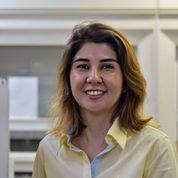Recent Advances of Hydroxyapatite and Its Applications, Volume II
A special issue of Minerals (ISSN 2075-163X). This special issue belongs to the section "Biomineralization and Biominerals".
Deadline for manuscript submissions: closed (10 October 2023) | Viewed by 3527
Special Issue Editors
Interests: photostability; photoactive materials; material modification for environmental remediation; semiconductor; adsorption; antimicrobial properties
Special Issues, Collections and Topics in MDPI journals
Interests: synthesis; characterization; modification; ion exchange; adsorption; biological properties
Special Issues, Collections and Topics in MDPI journals
Interests: clay minerals; calcium phosphate; hydroxyapatite; hybrid materials; nanocomposite; adsorption; organic pollutants; drugs; antimicrobial materials
Special Issues, Collections and Topics in MDPI journals
Special Issue Information
Dear Colleagues,
Calcium phosphates are compounds of substantial interest in interdisciplinary fields of science encompassing chemistry, biology, medicine, and geology. Among the calcium phosphates, hydroxyapatite is the most stable, with several practical applications. It is a crucial material for biomedical applications, owing to its excellent biocompatibility, bioactivity, and osteoconductivity. Hydroxyapatite can also be utilized for various environmental applications, including the removal of organic pollutants, quantitative analysis for the detection of pollutants, and photocatalytic degradation. In the biomedical field, both pure and modified hydroxyapatite are utilized in various forms, such as bioceramics, coatings, dental materials, antimicrobial materials, and vehicles for bioactive compounds. We invite you to submit your recent work on hydroxyapatite and its various applications for publication in our Special Issue.
The topics of interest for this Special Issue include, but are not limited to:
- the preparation, properties, and applications of hydroxyapatite;
- advanced characterization techniques for hydroxyapatite;
- functionalized hydroxyapatites and their applications;
- doped hydroxyapatites and their applications;
- biopolymer/hydroxyapatite nanocomposites;
- biological properties of hydroxyapatite;
- hydroxyapatite as a vehicle for drugs;
- hydroxyapatite and its compounds for bone tissue engineering;
- utilization of hydroxyapatite for environmental applications.
Dr. Josy Anteveli Osajima
Dr. Edson C. Silva-Fiho
Dr. Maria Gardennia Fonseca
Guest Editors
Manuscript Submission Information
Manuscripts should be submitted online at www.mdpi.com by registering and logging in to this website. Once you are registered, click here to go to the submission form. Manuscripts can be submitted until the deadline. All submissions that pass pre-check are peer-reviewed. Accepted papers will be published continuously in the journal (as soon as accepted) and will be listed together on the special issue website. Research articles, review articles as well as short communications are invited. For planned papers, a title and short abstract (about 100 words) can be sent to the Editorial Office for announcement on this website.
Submitted manuscripts should not have been published previously, nor be under consideration for publication elsewhere (except conference proceedings papers). All manuscripts are thoroughly refereed through a single-blind peer-review process. A guide for authors and other relevant information for submission of manuscripts is available on the Instructions for Authors page. Minerals is an international peer-reviewed open access monthly journal published by MDPI.
Please visit the Instructions for Authors page before submitting a manuscript. The Article Processing Charge (APC) for publication in this open access journal is 2400 CHF (Swiss Francs). Submitted papers should be well formatted and use good English. Authors may use MDPI's English editing service prior to publication or during author revisions.
Keywords
- bioactive material
- drug delivery
- environmental
- biopolymer
- nanocomposite
- doped hydroxyapatite
- functionalized hydroxyapatite
- biomaterial
Related Special Issue
- Recent Advances of Hydroxyapatite and Its Applications in Minerals (7 articles)







